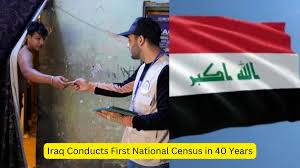Bihar Caste Census Reveals Demographic Insights
The recent Bihar caste census has unveiled crucial demographic insights, shedding light on the state’s diverse population. This revelation holds significant importance for aspirants preparing for various government exams, including teachers, police officers, banking, railways, defense, and civil service positions like PSCS to IAS. In this article, we will delve into why this news is essential, provide historical context, and present five key takeaways that students should know for their exams.

Why this News is Important
- Understanding Bihar’s Diversity: Bihar is known for its diverse population with various castes and communities. The caste census results provide a comprehensive view of this diversity, enabling students to better comprehend the social fabric of the state.
- Policy Implications: The data from the caste census can have far-reaching implications on government policies and schemes. Aspiring civil servants need to grasp the potential impact of this data on welfare programs and socio-economic development in Bihar.
- Social and Political Significance: Caste plays a crucial role in the social and political dynamics of Bihar. This news is vital for students aiming to enter the political arena or serve in administrative roles within the state.
Historical Context
The Bihar caste census is not a new initiative but a long-awaited one. The last caste-based census was conducted in 1931 during British colonial rule. Decades of demands for an updated census have finally culminated in this recent endeavor. It is essential to recognize that caste has been a contentious issue in Indian society, affecting politics, education, and socio-economic disparities.
Key Takeaways from the Bihar Caste Census
| Serial Number | Key Takeaway |
|---|---|
| 1 | Over 200+ castes identified in Bihar. |
| 2 | Yadavs and Kurmis are among the largest groups. |
| 3 | Data reveals disparities in land ownership. |
| 4 | Caste-based inequalities remain a challenge. |
| 5 | Policy formulation may be influenced by the data. |
Important FAQs for Students from this News
Q: What is the Bihar caste census?
A: The Bihar caste census is a demographic survey conducted to collect data on the distribution of various castes and communities in the state.
Q: Why is the Bihar caste census important for government exam aspirants?
A: Aspirants need to understand the demographic diversity and social dynamics of Bihar, which can be relevant for exams and administrative roles in the state.
Q: When was the last caste-based census conducted in Bihar?
A: The last caste-based census in Bihar was conducted in 1931 during British colonial rule.
Q: What are some key takeaways from the Bihar caste census?
A: Key takeaways include the identification of over 200 castes, disparities in land ownership, and the influence of caste-based inequalities on policies.
Q: How can knowledge of the caste census data benefit government officers and policymakers in Bihar?
A: Policymakers can use this data to formulate more effective policies and address socio-economic disparities in the state.
Some Important Current Affairs Links
















